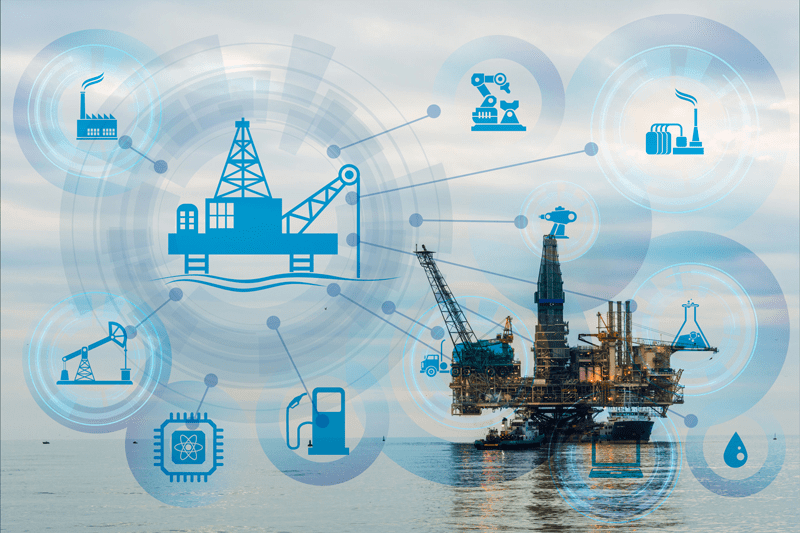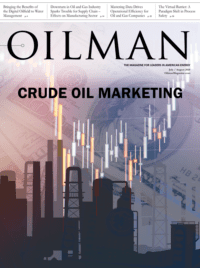With the typical oil and gas asset having so many moving, complex parts – some of which may be deep underground or under the sea – staying on top of the condition of every critical component has always been a challenge even with a large on-site workforce.
In today’s world, where reducing costs is the mandate to survival, the result is a smaller staff that is exacerbated by a large retiring workforce taking institutional knowledge with it. This means keeping complex mechanisms running at peak efficiency is becoming increasingly difficult.
That’s the reason “digital twins” – 3D representations of a physical object or system that show the inner workings and monitor the performance of every major component – have experienced a rise in popularity among oil and gas producers in recent years.
The advantage over 3D models of the past is that they do more than simply show where things are in a facility or provide a static view of process flows. With the incorporation of Internet of Things (IoT) sensors into the components, the digital twins can help oil and gas producers monitor the status of that equipment in real time, even from a distance, reducing the number of workers that need to be deployed on-site as well as the number of outside visits required to ensure refineries, platforms, and other assets continue to run smoothly.
In fact, with the proper configuration, a producer can conceivably monitor the status of every facility in a region or around the globe from a central location, and use the data to determine whether maintenance and repairs can be managed by local crews or whether centralized specialists need to be brought in.
This is a fairly basic use of digital twins that can be applied to both brownfield and greenfield facilities. It is essentially a reactive model that helps producers quickly address issues (especially those that are not easily visible) to improve output and efficiency while reducing costs.
Taking Advantage of Artificial Intelligence
There is, however, another level of effectiveness that can be achieved with the addition of one more element: artificial intelligence (AI). AI enables producers to move from being reactive to proactive in their approaches to everything from individual components to entire facilities. It can take the data currently being reported by IoT sensors, compare it to historical data from all the organization’s assets, and recognize patterns that indicate an issue may come up in the near future.
It also can help determine whether a parameter that is reading outside the expected norm is a problem or simply a normal reaction to other stimuli and thus does not require action at this time.
For example, suppose regular monitoring indicates a sudden pressure rise in a pipe. AI may recognize that the pressure rises that much in that pipe every time another specific action occurs upstream, so what appears to be abnormal is actually normal. No alarms go off and no action is required as long as the pressure returns to the approved parameters in keeping with historical data.
Extending the Value Through Predictive and Prescriptive Analytics
Digital twins with AI become even more powerful when tied to predictive and prescriptive analytics. With predictive analytics, facilities can get ahead of maintenance needs or the organization can deploy its limited human resources to address issues that could shut down the asset, or a part of production capacity, before the issues become critical. Producers can plan for and schedule full or partial shutdowns at a time that has the least direct impact on operations.
When the digital twins and AI are tied to prescriptive analytics, producers can run multiple “what if?” scenarios to determine the course of action that delivers the greatest benefits with the least amount of disruption and the lowest cost. In a greenfield facility, prescriptive analytics can guide the entire engineering and construction process to ensure the facility operates with maximum efficiency. In a brownfield facility, it can help producers determine which upgrades or improvements will deliver the maximum ROI so they can be prioritized appropriately.
Here are some specific examples of the benefits digital twins offer oil and gas producers:
- Keeping oil platforms operating 24×7 is critical, as a single pump failing in an offshore rig can cost producers anywhere from $100,000 to $300,000 per day in lost production. IoT sensors tied to a digital twin can provide engineers with real-time information on the equipment’s health and performance so they can react quickly to any issues. The engineers can direct on-site crews to the source of the issue in minutes, saving hours of troubleshooting while helping them get the platform productive again before losses begin to mount.
- Gas processing units with IoT sensors generate massive amounts of data each day. Yet most of that data goes unused for traditional producers because they lack the systems and computing power to make sense of it. Digital twins, coupled with deep learning and AI, use that data to make early and highly accurate detection of faults and predict the remaining useful life of an asset within the context of that operation. They also can provide guidance on the work that will be required by the field service team as well as detail the parts and skills needed to service troublesome assets.
- Digital twins at drilling locations can stream downhole data in real time as drilling occurs. By using edge analytics that compare current data to the organization’s historical data and outcomes in similar projects, producers can make better and faster decisions that help them reduce non-productive time and improve overall drilling performance.
Focus on the Business Problems
While all of this sounds very promising, digital twins should not be implemented for their own sake. As with any other technology, the first step is to identify the business problems and then consider digital twins as one of several options to solve them. The technology should only be acquired and implemented if there is a reason for it and it delivers the best value; otherwise, it becomes one more piece of shelfware that didn’t live up to its hype.
If digital twins are a valid option, producers also must look across their organizations to ensure they are ready for the type of transformational change they can bring. Yes, there is some incremental value in implementing them on a “spot” basis, but this type of “whack-a-mole” approach to modernization is very unlikely to deliver the desired results.
When digital twins can be applied on a large scale, however, producers can expect the benefits each year to be double what the original implementation cost was. That is an outstanding return on investment while also giving producers the tools they need for the future.
If digital twins are the right choice, right now is an ideal time to implement digital twin technology. With production slowed, there is less likely to be disruptions in the schedule, and employees are more likely to have the bandwidth to dig into these projects and complete the training. As a result, producers can take a huge leap forward into the future with a relatively modest investment.
Going Well Below the Surface
Just as the physical elements of a facility or platform may mostly be hidden from view, so it is for all the decision points that keep them running efficiently. Digital twins offer the opportunity to see beyond the surface to gain a deeper understanding of the millions of processes and components that together make up a modern asset to ensure producers are in the best position to not only keep them running effectively now, but also begin solving tomorrow’s problems today.
Daniel Sawyer is a Principal Consultant atComputer Task Group. With more than 20 years of experience delivering information technology in logistics and oil field support services, he has been a key consultant on 3D visualization and Digital Twin initiatives for major oil companies in Alaska since 2013. Sawyer’s expertise is in deploying cost-efficient technology with a focus on user workflow to increase business productivity.







